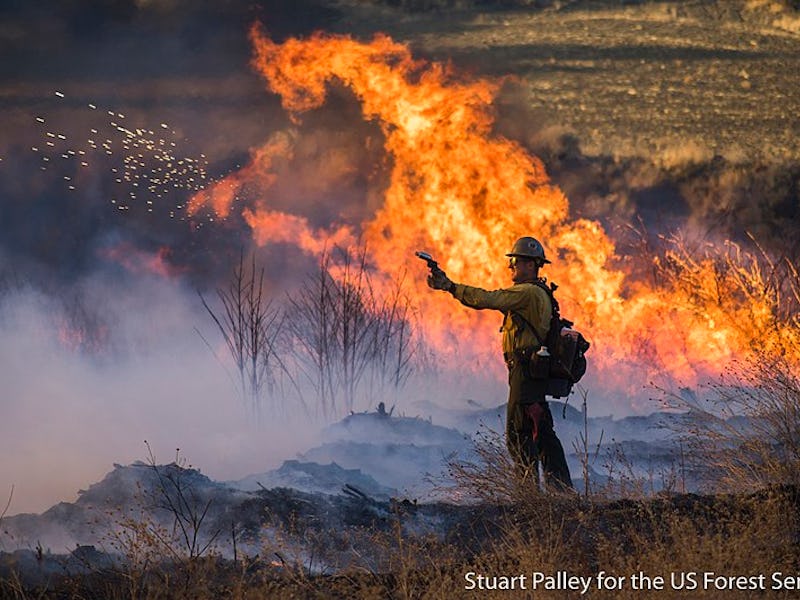A new gel-like fluid could save California from wildfires
This could be a game-changer.

Could a gel-like fluid prevent the wildfires from spreading and not harm the environment? Researchers in California, a state that’s seen 160,000 acres burn this year alone, may have the answer.
The researchers claim this fluid can last for long periods of time, and it would allow firefighters to focus more on preventing fires rather than just reacting to them. Climate change is making wildfires more common and more destructive, especially in California and Washington, so this fluid could help save a lot of lives and a lot of people’s homes.
A recently paper published in the journal Proceedings of the National Academy of Sciences explains how researchers think they can use this fluid sparingly, too.
Eric Appel, an assistant professor of material science and engineering at Stanford and one of the authors of the research, tells Inverse this substance wouldn’t need to be applied to vegetation very often.
“Our new materials are capable of maintaining the active fire retardants on vegetation through weathering and environmental exposure, allowing for a single annual treatment to prevent ignitions throughout the peak fire season,” Appel says.
A test of the fluid in San Luis Obispo, California, shows grass that is untreated (left) and grass that has been treated with the fluid (right).
Substances that are currently used to prevent fires from spreading typically only last for a short period of time. A couple of hours of rain might wash them away. When a fire is approaching, they also eventually start to evaporate. This substance looks like it could solve that problem.
During tests, the researchers found that this fluid stays on vegetation after half an inch of rainfall. It appears it can last in a natural area for a few months or so. The fluid can be applied to vegetation by plane or on the ground using spraying equipment.
Untreated vs. treated grass
See also: The megafires threatening California’s future have no “ecological parallel”
“The product has been approved by the US EPA and the California EPA and contains ingredients that are approved by the FDA for use in the human body,” Appel says. “Additionally, we worked with environmental toxicology experts at Stanford University to conduct toxicity and biodegradation studies that concluded the ingredients in the product are ‘environmentally benign.’”
It seems likely states like California will start using this liquid to address their problems with increasingly frequent wildfires. Wildfires cost California nearly $12 billion in 2017 alone.
“In our recent paper, we first highlight that 84% of the 300,000+ fires that have happened in California over the past 10 years started in select high-risk areas, such as roadside utilities infrastructure,” Appel says. “That highlights that with the right tool in hand, you would only need to treat a small amount of land (not large swathes of the forest) to prevent most fires from occurring in the first place. We are advocating for targeted treatments aimed specifically at the areas that are most prone to ignitions.”
The researchers are currently working with the California Department of Transportation and Cal Fire to test the substance in areas where there are frequent wildfires. If things go well, California may finally have a solution to a problem that looked as if it was going to make the state uninhabitable.